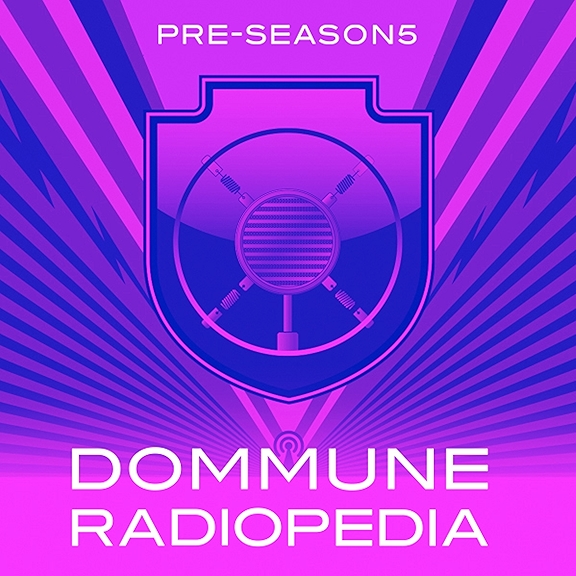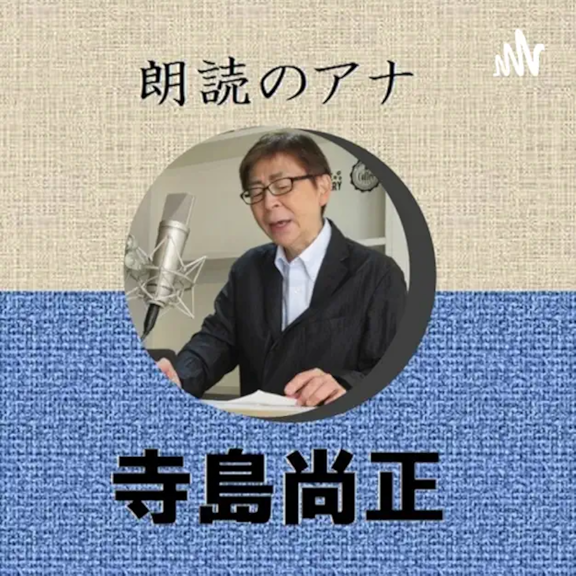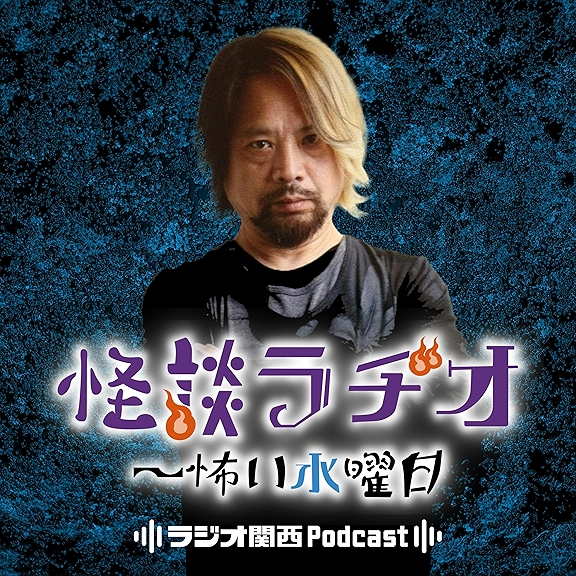
Bonus Episode - October 7th Webinar Q & A
On October 7th, I hosted a webinar called "How Professional Screenwriters Create Great Characters", where I talked about how to come up with interesting and unique characters, as well as how tapping into your everyday life interactions with people can help with this. This episode addresses questions you asked in our Q&A session that we didn't have time to answer. There's lots of great info here, make sure you watch.
Show Notes
Free Writing Webinar - https://michaeljamin.com/op/webinar-registration/
Michael's Online Screenwriting Course - https://michaeljamin.com/course
Free Screenwriting Lesson - https://michaeljamin.com/free
Join My Newsletter - https://michaeljamin.com/newsletter
Autogenerated Transcript
Michael Jamin:
I feel like we're overthinking this a little bit. I feel like maybe we're giving labels that don't need to be labeled. We have a hero. We're going to put this hero on a journey. And who are the people? Or if it's a like a buddy comedy or whatever we're talking about, or if it's a husband and wife or whatever, what's the story? What's the journey we're putting them on and who are the characters we're going to get in their way? You're listening to What the Hell is Michael Jamin talking about? I'll tell you what I'm talking about. I'm talking about creativity, I'm talking about writing, and I'm talking about reinventing yourself through the arts.
Hey everyone, it's Michael Jamin, and today we're going to answer the question, what the hell is Michael Jamin talking about? Well, today I'm talking about questions from my previous webinar. As many of you know, I do a webinar every three weeks or so where I talk about screenwriting and it's about an hour long and you're all invited and it's free. And I don't always have time to answer all these questions, but Phil is here with us visiting again. Hello, Phil. Hello and happy to be here. He's going to hit me with some of these questions we're going to answer.
Phil Hudson:
Lemme hit you baby one more time. Let's do it. All right. So again, kind of group questions, context for everyone. This was from a webinar talking about how professional screenwriters create great characters. You've got another really good webinar that a lot of people really like, which is how to write a great story. And so contextually, these are really more character based. There's some miscellaneous stuff, there's some break in questions. We've kind of grouped them together. So as I go through these, we'll just try to keep 'em on theme and let's get into it. Let's talk craft. Think Craft is always a good place to start. Anna Renee Chavez wants to know what big differences are there between writing for animation versus live action?
Michael Jamin:
Great question. Oh, and I just want to clarify everybody by webinars, you are free. Go to michaeljamin.com/webinar to sign up. I changed the topics, but whatever. So this woman wants to know what's the difference between writing for animation and live action? Not that much in terms of, and I teach 'em both in my course. The differences really are not that different. The only thing you want to think about is well ask yourself why is this show animated? What's the advantages to making this show animated? So in BoJack Horseman, it's a very real and grounded show, but you have horses talking and fish talking, or Whitney, you couldn't do that in live action. So you're taking advantage of the medium. If you have it animated, take advantage of it. When my partner and I did Glen Martin DDS, which is the show there a stop motion animation, we would ask ourselves, what's Clay tastic about this? We'd call it, because it wasn't claymation, but we pretended it was claymation. So what's Clay tastic about this scene? Is someone's head going to come off? So for example, we did an episode where the character, the boy got his head stuck in an elephant's ass. You can't do that in live action. So you can do that in animation, but the story itself, it's very similar. The stories are very similar. It's just that you just take advantage of the medium.
Phil Hudson:
Yeah, awesome. And I think another good example of this, where a choice was made to do live action RET link's buddy system, you had mentioned to me that one point that it's basically just a cartoon. It's like a live action cartoon with silly It is, but they can't be as silly as they could if it was animated and they could do whatever they wanted. So it still kind of grounds it in this reality, but it's still a bit silly.
Michael Jamin:
Yeah, it could have been a cartoon, but we would've gone even we did one episode where we turned Lincoln into a robot because the character was like, my life would be easier if I was a robot. So that probably would've been even better if it was animated. But in real life we just started putting 'em in crappy robot costumes.
Phil Hudson:
Yeah,
Michael Jamin:
But it was funny. We turned him into a robot, so it was kind of broad.
Phil Hudson:
Love it. Julia Wells considering extraordinary and ordinary pairing. What would you say about friends, how I Met Your Mother, or shows that are more grounded? I think this is in reference in your webinar when you're talking about your characters and putting your characters together or how you write your characters for a specific story, and there's a difference between extraordinary and ordinary if you want something extraordinary when you're pairing your characters together.
Michael Jamin:
Well, yeah, most shows are like that. Most sitcoms, the characters are just normal people. And yeah, it was kind of like ordinary characters, kind of an extraordinary situations where it would've been unusual. I'm trying to think of an example from friends, but alright, so they did an episode where Joey and Joey and what's his name, not Kramer Chandler, the guy Chandler are going to sit in their chairs all episode, all ordinary guys doing something extraordinary. They're not going to move from their chairs and they're going to see if they get everything delivered and they're going to eat and drink and they're not going to get up, stuff like that. So I don't think it's any different from any other sitcom I've worked on other than the characters.
Phil Hudson:
I just started re-watching How I Met Your Mother, which I've seen who knows how many times. But it's a good background show while I'm working on stuff that's not necessarily logical, analytical stuff. And there's an episode where it's the Halloween party and he's the hanging Chad because he met the sexy pumpkin in 2001 during the election or 1999 or whatever. And so Barney's got tickets to the Victoria's Secret model, Christmas Halloween costume party, and he's trying to get his friend to this extraordinary thing and his friend won't leave. He wants to be at this party to potentially meet this girl on this rooftop again. And it's the push and pull of Come be amazing, stop looking for love, you're losing. So it plays really well in that situation. Alright, cool. AIA Saunders or AIA Sanders, I apologize for ruining that. How do you feel about basing a character on them knowing themselves or basing a character on yourself and your own doubts?
Michael Jamin:
Yeah, do it all. I mean, you should do it. You should totally mind your own life For stories, and I have a whole module on this in the course, and you can disguise it too, so people don't have to know it's you, but you're just stealing parts of yourself or parts of people as other characters, but you change it enough and change the name, but also change professions and change. You're just stealing attributes from people so they wouldn't know it. But that's what your life is for your life is to steal things from
Phil Hudson:
Perfect. Charles Shin, do you have any tips or advice with coming up with great names for your characters?
Michael Jamin:
I spoke a little bit about this in the old days. We used to have a baby naming book, my partner and I, and then now it's kind of easy to go on the internet or just in life. You'll come across a street name and you go, oh, that's a good last name for a character. I just kind of keep a list. What was one? I had one the other day I added to my list, I can't remember, but it was like a street sign I go that I passed. I go, that's a good character's name.
Phil Hudson:
Yeah. I've also seen our showrunners on Tacoma fd. There's a random character as Chief Phil Dylan. Well, I'm Phil. It was the writer's pa and I replaced Dylan, the writer's pa.
Michael Jamin:
Yeah, it's funny. I know they took that for you. I mean, they tend to do that a lot where at least Steve Lemi does. He'll just name characters after people he knows.
Phil Hudson:
Yeah. There's one line from Ike in an episode that I think you guys wrote. It's like Benjamin Duff or Benjamin Crump
Michael Jamin:
And
Phil Hudson:
Ben Crump was our DIT set. Right. So just throw people's names and give 'em fun stuff. Awesome. You also talked, I think you talked about funny names that go together too. At one point that was something you do.
Michael Jamin:
I talked about, I had a character named, what was his name? Something
Phil Hudson:
The third? It was something the fourth. The fourth, yeah. What was his
Michael Jamin:
Name? God, I can't remember.
Phil Hudson:
It was like, but it was a bunch of things together that rhymed almost or had similar names.
Michael Jamin:
I'd have to look it up. I can't. Oh, Dan Danforth iv. That's what it was. Dan Dan. I had a character named Dan Danforth iv, and I just thought that was a good name because Dan Danforth is weird enough. But why did his parents have to saddle in with the fourth? Because, well, they felt like they had to because the father's the third is a generational thing. They can't, so they stuck this guy with his shitty name and what's that going to, having a name like that, you're going to be teased as a child. And I thought the character is kind of a feckless type and he became a sheriff of a small town as a way of demanding respect because he'd been teased all his life to be named Dan Danforth iv. And so now he has a badge, but people still think he's a dipshit. And so I just thought it was kind of a good name for a character like that, who's kind of feckless.
Phil Hudson:
Alright, jumping into the course and character related topics, these are a bit intermingled because a lot of what you talked about, and we even brought this up with Mike Repp and Kevin Lewandowski about how valuable that course, that character worksheet is. But because this webinar is about character, there are a lot of questions about character. So number one, pat Nava. How do you make characters that the audience wants to know more about?
Michael Jamin:
Well, it's not so much the characters, it's just the story you give them. So that's not so much the character. That's the story.
Phil Hudson:
There we go. Cookies and sugar. How do we make characters diverse and not self project
Michael Jamin:
Diverse and not self project? They seem very different questions to
Phil Hudson:
Me. So this is, I think a really good question and from context for this, this person is a minor and they want to be a writer and they've been told by their well meaning adults in their life and mentors not to do that because it's a waste of time because you'll never make it as a writer. And that was a question she'd asked another point. So this question really speaks to me of something I heard really early on when I was studying, which is you are not your characters. Don't write yourself into your characters, which is kind of contradictory to the advice you give, which is writing your life for stories.
Michael Jamin:
Why not? I dunno why they would give you that advice. Why not? Yeah, it might've been because people were just writing self-indulgent material that could have been,
Phil Hudson:
I know on writing by Stephen King, he says that you are not your characters and it is a mistake to think that your characters will behave the way you would. So if you find your character doing something you wouldn't do, it is your job to allow them to do that. And I find that a lot with my writing. There are many things I write where I would never do as someone from a more conservative background who is religiously inclined, like my characters say and do things all the time. I'm like, oh, where did that come from? Not who I am, but that's what it felt like needed to happen as that character was coming through me. And I feel it's my responsibility to just let that happen. But the difference is to me is don't make your characters do and make the actions you would do. And if you're a more passive person, that's not a good thing for your character to be because your character needs to make choices. And that's the conflict of it all.
Michael Jamin:
But Larry David on Kirby Enthusiasm, he's playing himself, but Larry David is not that person in real life. These are just, it's a heightened version of himself. Larry David knows when to hold his tongue. His character doesn't, his character can't let it go. Larry David just playing. It's a heightened version of himself. It's the worst version of himself, which is why it's so funny he wouldn't do that in real life. I mean, Larry, he wouldn't do that,
Phil Hudson:
Right? But if you look at yourself, or even friends you have or people that you know and you say, I've got this buddy who is super quiet, but then when he talks it is just cuts with a thousand lashes because he is so sharp, it'll just take the wind out of your sails in a second. So if you have someone and you take that element and you say, I wonder how I can make that funnier. How could I take this tick that I have or that my wife has and just make it, turn it up to 11. That's where the comedy comes from and that's where the conflict comes from. So that's what you're saying by mind your life for stories and put your characters in situations you've been in, but don't do what you did necessarily.
Michael Jamin:
You could turn it up. Yeah, turn it up a notch. That's it. It makes it fun and interesting.
Phil Hudson:
Yeah. Cool. Matthew? I think he likes lasagna. Many people begin with an idea for a character. I've always been led by the concept and the plot, then I tailored the characters to fit within it. What are your thoughts on that method?
Michael Jamin:
Sure. I mean that works fine. I mean, if you can create someone who still feels real, like I said, even though Larry David is a heightened version of himself, it still feels real. It feels like he almost, it's not crazy. It's not beyond the realm of possibility that he would do that. So as your characters don't, as long as it doesn't feel like you're contorting the character to do something that your story requires, which would not be human behavior, at the end of the day, these characters have to be human
Phil Hudson:
Like jumping the shark
Michael Jamin:
Or jumping the shark. But also often my partner and I will write a scene and Seaver will say something like a character that's not human behavior. We're just making the character do this because two writers in Hollywood need him to say that, which is, I mean, sometimes we'll laugh, we'll say, why would a character say that? And then I'll say that we have four cameras on him and we have to shoot something tonight. But that's not the right answer. The right answer is it has to be human behavior.
Phil Hudson:
So tangentially related would be DSX, Mina, right? Which is circumstance or coincidence, getting your character out of trouble or solving your problem. So it's not the same, but very similar as it's a
Michael Jamin:
Lazy writing dem and I believe is Latin for God,
Phil Hudson:
God in the machine,
Michael Jamin:
A God or God can get you into trouble or a coincidence can get you into trouble but can't get you out of trouble. So if God comes to the rescue and saves the day, that's considered bad writing. So an example for this that people like to harp on is somehow Palpatine returned. Isn't that his name? Palpatine?
Phil Hudson:
Yeah, Palpatine.
Michael Jamin:
Palpatine. I didn't even watch it. I didn't watch it, so I'm not going to badmouth that movie, but that's what people say somehow God came in and everyone seems to roll their eyes at it. And again, I haven't seen it so I really shouldn't say, but that's what I've heard. That would be an example of maybe something that people don't, they went too far.
Phil Hudson:
Yeah, yeah. How do you introduce characters? I normally have their name, age in a short sentence, which sums up their personality. I then allow them to show their character through their actions.
Michael Jamin:
Yeah, those are stage direction and no one wants reading stage direct wants to read stage direction. So I usually say what the character's name is exactly a few, maybe a physical attribute or two their age and something about their personality that gets it real fast. Here's a bad description. You see this a lot, Lucy, cute, but doesn't know a girl next door. Cute, but doesn't realize it or sexy, but doesn't know it. How many times have I got to see that and you just roll your eyes. So it's got to be better than that.
Phil Hudson:
Yeah,
Michael Jamin:
That's cliche.
Phil Hudson:
Do you ever put anything related? I've heard other writers recommend putting in cues for clothing to help wardrobe understand how this person dresses or informed character. Is that something you ever consider?
Michael Jamin:
Only if it's absolutely necessary. If the character wears loose fitting clothing to hide their body, that makes sense. But unless it's absolutely necessary, we can have these discussions at the production meeting. We don't need to know it now in the script unless it absolutely necessary.
Phil Hudson:
Great. Tom Merrim, when you write characters, do you focus more on the personalities you want added to the mix or focus more on the role each plays or what they need to do in the story?
Michael Jamin:
And that's what I teach in the course. Every character has to be there for a reason and they have to help elucidate the story or else it's just, you don't want to just mash these. Even if you have 10 great characters, like oh, they're all interesting, but maybe they don't fit together. They have to fit together to tell a story. The story is the look. We all work for the story, the writers, the directors, the actors, we all serve the story and that includes the characters. The story comes first. That's why it's so important to learn what story is.
Phil Hudson:
Yeah. Great. Justin Kaiser, to develop your characters, do you focus on relationships more than the characters themselves?
Michael Jamin:
Well, more, I mean, I always think what's the relationship between this character and the other character? I mean, you may need to know that if you have a father and a son and you want to know how they interact and maybe the kid's under the father's thumb and at the end of the show or movie, he's going to stand on his own two feet and defy his father. That's important that you might need to know that. But I don't need, if that's what the story is about, then yeah, I need to know the relationship, but I don't need to have all the answers, just the ones that are pertinent for the story.
Phil Hudson:
And when you get into the course, you'll learn that there's this awesome sheet that you have that you were provided that was given to you. Was it Steve Levitan gave it to you. And it's basically defining all of these nuances of your character so that you can build them out to be someone unique. And you clearly see a pattern. And this kind of relates back, I think to cookies and sugars question. I'm assuming this is universal, not just to me thing, but definitely a Phil Hudson thing. When I create my characters and I start using that spreadsheet, I start noticing like, oh, they're all very similar. We got to mix that up, so let's fix this, let's fix this. And so those are like, I have specific things I go to or lean towards and it's like I need to fix that. And that allows me to create conflict creates differences in the way people see things. It also empowers me when I'm writing these characters to know how they would talk about this specific thing or react in this situation in a way that empowers the story to be better and serve their role that they've been given.
Michael Jamin:
Here's an extreme example of that. Let's say you're writing Oceans 11 and you have, I dunno, I guess, or have loving characters or whatever. You got the brainiac, you got the suave guy, you got the bomb cutter, who's a loose cannon, you got the thug, you got the nerd or whatever. Every character in that group has their own distinct, not only personality, but almost archetype of personality. There shouldn't be overlap. And then that's an extreme example, but even if you're writing something more grounded and real or intimate, rather, you'll ask, you'll have the same conversations with yourself. So why do I have two heart throb characters? I only need one. You want to have different viewpoints. In the episode, we talked a little bit about love. Actually in the last podcast we talked about, we did a q and a and I mentioned love actually is about looking at love on Christmas time from whatever, 15, how many storylines, whatever, eight storylines. And each character has a very specific kind of role. And there's no, and there shouldn't be. If there is, we don't need two characters for that same point of view. This is a work of art. You don't need two, just one.
Phil Hudson:
Yeah. And going back to how I met your mother, there's really three kind of four different characters there in this group. There's a couple, Marshall and Lily, there's Ted, our protagonist, and there's Barney, and then there's Robin. And they all reflect this different opinion about relationships and dating in New York City. You've got the couple that have been together since college and they're together and they just love each other all the time. The ones seeking true love, the player who just wants to hook up with as many women as he can. Ironically played by Neil Patrick Harris, who's gay, and he does a great job of playing that person. And then you have Robin who is afraid of love and kind of withdraws from love and that creates that ecosystem where they're all playing off of each
Michael Jamin:
Other. They all have different viewpoints. Yeah.
Phil Hudson:
I'll also say I'm working on this feature that I haven't written a feature in a long time and I got the story that I really like and it centers around a family situation. And I'm thinking about my family and my brothers and my relationship with my siblings. And it's like we were all raised the same. We are all very different people. We have fights because there are things we absolutely disagree on, but then there's always this layer of relationship. And we had understanding that even when we get really mad at each other to a certain degree, we know we're always going to come back together. Except there's always that thing dangling out there that maybe we won't. And I have one sibling who's like that. I don't know that I could have a same conversation with her that I could with my older brother the same way I would. She may never want to talk to me again because he's just a bit more sensitive. So it's like, okay, how do I look at all of these relationships here? And just because we all come from the same place and we had almost the same experiences. We are all very different.
So Cameron Barnes, he said, Michael said, a cast of characters should be in constant conflict, but does that actually just mean constant conflict throughout the story?
Michael Jamin:
What else would it mean? I mean,
Phil Hudson:
Yeah, I dunno.
Michael Jamin:
I don't know. I mean, yeah, conflict
Phil Hudson:
Doesn't, lemme talk about the constant conflict. Maybe just address that.
Michael Jamin:
Well, conflict doesn't have to be people fighting. It could be passive aggressive. It could be people caring very much for each other, the mother, and you've seen this trope before, the mother, the overbearing mother, trying to get the daughter to be happy and settle down and find a man, whatever. She's just in her life that's conflict. A mother who's constantly meddling and she means well and the daughter knows she means well, but she keeps stepping on her toes. You've seen that story a million times. We've seen it because it works. So that's conflict. But if it was, what about a show where everyone was always getting along? Well, that's boring, unfortunately that's just boring. That's the scene right? Before everything goes south, that's what that is. You have one scene like that and then it goes
Phil Hudson:
South. And it's not that it's all okay that people are just kind of egg shelling, walking on eggshells around each other to maintain the peace in this moment, right? Yeah, because it's going to go nuts at any moment. Yeah.
Michael Jamin:
Drama is conflict, guys. So that's it. Drama is conflict,
Phil Hudson:
But that's also just life. And I think that's why we watch it. Life is not perfect harmony at all times with everybody. There's things,
Michael Jamin:
But even if you had a scene where young couple's in love and everything's great. Okay, great. What's one scene they met boy meets girl, they fall in love. Great. How many,
Phil Hudson:
Why do you leave the towels on the floor? He leaves the
Michael Jamin:
Towel. Yeah, something's going to have to happen where
Phil Hudson:
When you take your toothbrush out of your mouth, it flicks toothpaste on the mirror and you never clean it. Right? That's the stuff that eats at couples.
Michael Jamin:
Yeah. So you need stuff like that. Everyone loves Raymond. They were a happy couple, they had a happy marriage, but you still have to fight Rose, what are we watching?
Phil Hudson:
But that's also fighting in a relationship is what makes your relationship better. If you can get through those things. And fighting doesn't mean screaming and yelling and throwing stuff at each other. It could just be disagreements or heated conversations is like you got to get through the conflict, come to a resolution,
Michael Jamin:
Right?
Phil Hudson:
This thing bothers me. This thing bothers you. How are we going to fix this? We live together and we're going to be together forever. So let's figure this out. It's going to bother me every day forever.
Michael Jamin:
Yeah.
Phil Hudson:
Matthew Lavania back. What's the difference between a villain and an antagonist?
Michael Jamin:
I don't know. I mean a villain I guess is an arch formative, a villain sounds like it's something that's a heightened antagonist. That's what it sounds like. An antagonist doesn't have to be a villain. It could just, if you have, like I said, a daughter and a mother and the mother's overbearing, then the mother's an antagonist. Doesn't mean she's a villain. The stepmother's the villain in Cinderella. So it's just a heightened antagonist I suppose. But we're splitting hair. I don't think we have to worry about that really. I mean it's like an academic question. I could think
Phil Hudson:
You might say Thanos in the Marvel universe is the villain because he's got this big existential threat. But I think one of the things you highlight definitely in my writing is your antagonist still needs to be likable. Not likable in the sense, but we need to understand that they think they're the hero. And in this case, Thanos wants to prevent genocide because his world went through this. And so his way of doing, it's by killing half the people in existence to prevent this thing from happening.
Michael Jamin:
Think about land from Quentin Tarantino's,
Phil Hudson:
Glorious
Michael Jamin:
Bastards and glorious bastards. What a great villain. I mean, he was a great villain. He was the Jew hunter, the Nazi man that was a badass guy. But he was complex and there was something so about him, even though what he was doing was so incredibly vile and offensive. And so that's when you humanize your villain, you make it. It makes your writing so much richer. I mean the fact that he spoke so many languages and he was educated. He's
Phil Hudson:
Charismatic. Yeah,
Michael Jamin:
He was charismatic and yet still
Phil Hudson:
And very polite. Thank you so much for inviting. Yeah,
Michael Jamin:
Very
Phil Hudson:
Inviting, inviting. May I ask you for some milk?
Michael Jamin:
Yeah.
Phil Hudson:
The Jews are underneath me right now, aren't they? Yeah.
Michael Jamin:
And you just didn't know where you stood with the guy. So he was just a very nice guy doing awful, awful things. So that's great writing
Phil Hudson:
That scene when he's sitting down with Ana, I'd like to go over the theater and he's vetting her and he's putting cream down for her and he's like, he knows who she is. It is unspoken subtext. He is aware that this is the girl that got away. You see it in her reaction when she leaves and she's hyperventilating and she just kept it together
Michael Jamin:
And he was like a mercenary.
Phil Hudson:
Then you find out later that that's all part of his plan. This is how he's going to get out.
Michael Jamin:
Great writing. That's all that is. That's all that movie is great writing,
Phil Hudson:
Which is followed up by
Michael Jamin:
Great acting
Phil Hudson:
And great production and great editing and great everything. That's
Michael Jamin:
All that was though.
Phil Hudson:
Alright. Luke felt. How do you ensure that the story around the character matches the lesson that they need to learn?
Michael Jamin:
Can you say that again? How do I ensure?
Phil Hudson:
So this is a presupposition that your character needs to learn something by the end of your script. So how do you ensure that the story around that character gets them to the point that they learn something?
Michael Jamin:
Well, okay, I don't believe characters have to learn anything. I do think they have to grow or else why did you put 'em on a journey? If not to them it has to be you're changed in some way. If you take a character and you take 'em to the top of Mount Everest, they have to be changed in some way or else why did you take 'em there? So it doesn't mean they have to learn a lesson, they could be worse off. But if your why stories is a journey and why go on the journey if we're not going to get a view and the view better be something interesting, why did you take me on this long trip? And if the character didn't in some way change or grow, it doesn't mean learn a lesson, just change in some small way. Why didn't we take 'em on that trip? Why did we go there? Why did you waste our time? And by the way, there are bad movies where this doesn't happen and I always feel like, well, why did you just waste my time? And so just because there's bad writing out there doesn't mean we have to participate in it. It doesn't mean we have to add to it.
Phil Hudson:
I think there's an inclination, and I've seen this in myself and many other writers in film school and definitely here in Los Angeles, that you want to buck the trend and buck the system and you don't want to follow story structure and you want to do your own thing. It's almost like you want to reinvent the world of writing and you also want to play into tragedy and disappoint, defeat audience expectations and all these things. And that's artful writing. And I think what I've learned from you in the course and being in the writer's room is that those things serve a purpose and you can still do those things, but you do it in a surprising way and it works because there's a structure to it.
Michael Jamin:
Yeah. I mean, everyone wants to reinvent writing, reinvent the story. Look, the story works. It's been working for thousands of years. You can make a good living writing compelling story. And when I watch a story that's compelling and that works, I don't think, wow, they just reinvented the story. I don't think that, I just think they told a really good story. I feel like they're doing what I'm doing, but maybe better or on a higher level. I don't think they just completely change with some small exceptions sometimes. I'll watch, for example, inception, Christopher Nolan, I, I've watched it four times. I still don't know what it's about. I still can't follow it. It's obviously a great movie, but I don't think we have to all write like that in order to tell a great story.
Phil Hudson:
And I think he just announced what is happening. He just revealed that during the Oppenheimer interviews. You can go look that up on the Google if anybody's in. But yeah, I mean that's his style and it's very much his cscope, I think is what it is. Or Cscope, his logo is a maze. It's elaborate. He's kind of telling you this is his way of telling
Michael Jamin:
Stories. That's how he does it and that's how he thinks.
Phil Hudson:
It started with Memento and it started with even other stuff he directed but didn't write, which I'm blanking on it, but it's like one in Alaska and it's psychological thriller. But yeah, all of his stuff is that, and that's his motif and his style.
Michael Jamin:
I'd go so far as to say that the guy's kind of a genius. And so unless you think you're a genius too, maybe don't try to reinvent. I don't think I'm a genius. But that said, I couldn't write anything like Memento. It hurts my head to think about it. And I enjoyed a memento and Inception really loved it. I couldn't come close to it. I write, what I do is I write comedy and I'm very good at that. My one little thing, and that's okay. We all have our one little thing that we're good at and you have to just lean into it. Christopher Nolan doesn't write comedy, which is good. He has a sing that he does and we love what he does. We don't all have to be experts at everything.
Phil Hudson:
Right? Yeah. Justin Kaiser, how do you decide that another character is needed to advance the story or if that attribute moral personality can be added to another existing character?
Michael Jamin:
I
Phil Hudson:
Guess kind of the question is how do you know when you have enough characters in your story?
Michael Jamin:
Well, it's a little different. If you're writing a TV show, if a TV show you need to write, you have to have a cast and it has to be conflict. You want to have, let's say five or six characters that always are going to always be in conflict with each other week in and week out as you tell different stories. If you're writing a movie, you really want to think about who's the star of this movie, or if it's a two hander, who are the stars, if it's a buddy cop movie or whatever, you have two cops or it's a buddy movie or a road trip movie. You have these two characters and you only have the other characters as needed to help tell the story, the journey you're putting those two characters on. So if you take a good example, because we're mentioning Buddy comedies, midnight Run, so Charles Groden and Robert De Niro. It's a buddy comedy you're putting and a road trip, comedy, whatever, not so much a comedy but drama and you're putting them on an adventure, so you just need obstacles to throw in their ways. So you have Dennis Farinas character who's the mobster, but we're not following Dennis Farinas story. We're following Robert De Niro's relationship with Charles. That's it. Everyone else is there to help. Tell Robert De Niro's story and Charles Groton's story.
Phil Hudson:
Yeah, easy Rider, very similar, right? You've got these two bikers and you've got their lawyer Jack, Jack nickles, and then it, it's about them. And that's experience of going across America right in the seventies. It's not about the hippies they meet at the Waterhole in Santa Fe. It's about those and what happens to them as they go through America, Julia Wells, and how do you prevent the worst characters from being so far outside their wheelhouse that they can't possibly succeed or it becomes unbelievable. And this is in reference to this kind of golden nugget you've been talking about recently in your Yeah,
Michael Jamin:
Everyone please come to my webinars about this one's about character. She's talking about character, but I do another one on story and they're free. You go to michael tamer.com
Phil Hudson:
And you're going to get a lot of these questions for people. A lot of this is coming out of, it's in context in the webinar. So you're hearing this lesson and these very important principles for writers, and these are questions coming out of that. And this is one of




















